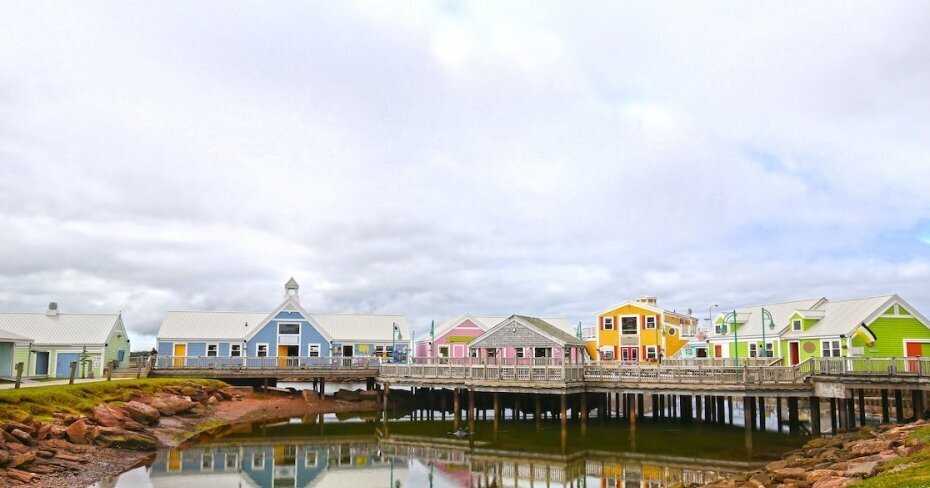What To Expect In 2014 Province By Province: Prince Edward Island
By: Gary Parkinson on March 6, 2014
As the smallest province in Canada, the size of the housing market in Prince Edward Island is substantially less than the rest of the country. But the province is one of the most important in Canadian history, recognized as “the Birthplace of Confederation” when the Charlottetown Conference laid the framework for what would later become Canada.
The population of the province is approximately 150,000 people, far less than the populations of the other provinces – as well as notably less than many major cities across the country. In fact, PEI has only 2 major cities, with smaller communities distributed across the island.
Is Canada’s island getaway your ideal destination for a home? Before you answer that, first think about answers to some important questions.
Variable or Fixed Mortgage
PEI can be a lovely place to make a living, but you want to make that living affordable. One of the most important ways of making life affordable is to invest in a home, and for most of us, that requires financing through a mortgage.
Across Canada, every homebuyer must ask themselves – does it make the most financial sense to play it safe with a fixed mortgage even though the cost is more expensive up front? Or is it worth paying less in the short term through a variable mortgage, hoping that interest rates remain near historic low levels today?
Each buyer’s financial situation is different, and in the end you must decide what is or is not affordable on your budget. But a great way to help you reach that conclusion is to compare the most affordable mortgage rates that PEI has to offer before you make your own offer. This way, you know you’ve done your homework, and can leverage the best price that you can afford.
2013
Data from the CMHC revealed that 2013 was a slow year for housing in PEI, as was the case across most regions in the Maritimes. By the end of the year, construction on new single detached and multiunit homes was down 13 percent from rates in 2012.
The slowdown is a complete reversal from the housing construction boom that occurred on the island from over the four years prior to 2013. But tougher economic conditions are causing many natives of PEI to migrate west in search of better job prospects, reducing the demand for new homes on the island.
Along with reduced demand for new homes, the number of existing homes that changed hands also dropped from a year over year perspective. However, according to the CREA, home prices in PEI rose by approximately 2 percent to around $156,000 by the end of 2013.
Home Price Predictions 2014
Unfortunately for the PEI economy, things do not look any better for 2014 than they did in 2013. Housing starts are forecast to continue declining throughout the year, as well as into 2015.
With less demand, sales are also expected to continue dropping, with the Canadian Real Estate Association projecting a drop in sales of 7 percent across the province year over year. The total sales forecast projects slightly over 1,300 homes will change hands by the end of 2014.
Though demand, construction, and sales will all continue declining, average home prices believe it or not, are forecast to rise. However, the forecast only calls for a 1 percent increase in average prices to approximately $158,000. Sellers will likely use the lack of supply to hold firm on their asking prices for the few buyers that will be investing in a PEI home.
Charlottetown
The capital and largest city of PEI, Charlottetown and surrounding communities are home to nearly half of the entire population of the province. As a result, the strength of PEI’s housing sector is defined by trends in Charlottetown, and whether residents can afford mortgages in today’s climate.
Charlottetown will fare better than much of the province, but is still feeling the effects of a weak provincial economy. The CMHC predicts multiple housing starts will not pick up in 2014, as the market is oversupplied from developments in 2013. Single detached starts are also expected to drop, but at a more modest rate of around 1 percent.
Prices will also decrease a very modest rate to around $155,500, with the CMHC predicting very little change in 2015 to around $155,000. Until the economy rebounds and jobs return to the capital, Charlottetown’s housing sector will remain very soft.
Summerside
The largest city on the western side of the island, Summerside’s economy revolves around manufacturing, aerospace development, agriculture, and fishing – all of which are softening due to little capital investment in the region.
As a result, the local housing market is very sluggish, though realtors will say the market is overcorrecting following four years of strong growth. Many residents in Summerside rent homes as opposed to investing in them.
Closing Thoughts
As is the case with much of Atlantic Canada, answering the question of whether to invest in a home really comes down to your job stability. The economy remains weak with few employment prospects on the horizon in several sectors across PEI.
If you are able to afford the down payment and the subsequent housing costs that come with being a homeowner, be sure to answer a few more questions before signing the agreement. Have you found a mortgage that fits with your budget and lifestyle? Can you negotiate a better rate in a different community?
Are you hoping to remain near Charlottetown, or would you prefer living in a smaller community? Do you want a single detached home or prefer a multiunit building like a condo?
These are all important questions to ask, and they all do demand answers to make a wise home investment decision. Stats and data can help give you ideas and information, but only you can decide what property, what location, and most importantly how expensive a home you can afford to make a living.


.jpg?itok=tIiHyjyb)